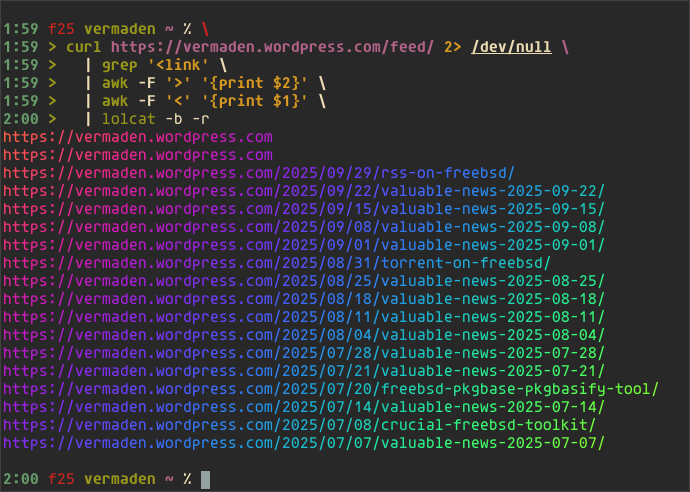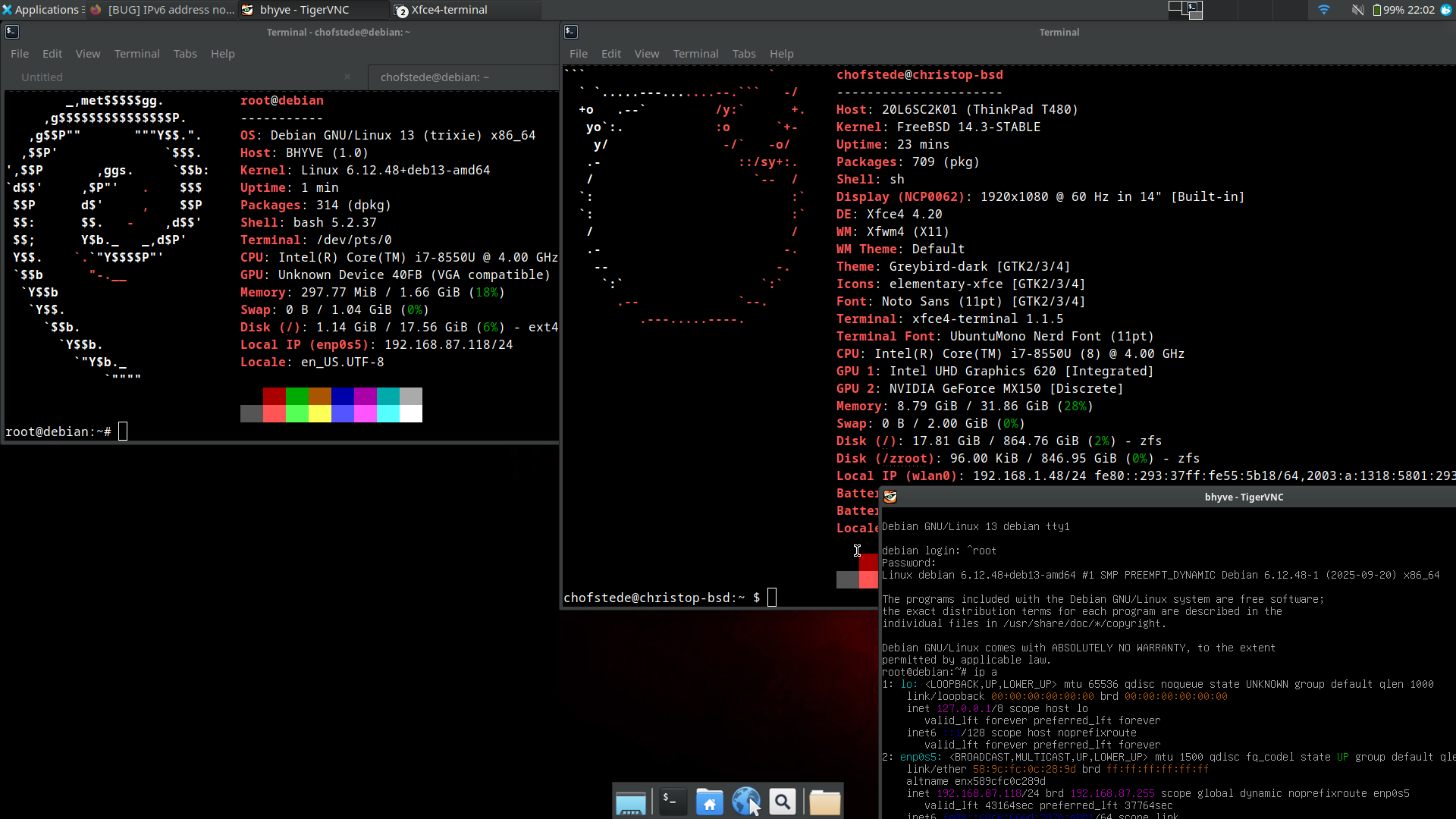Search results for tag #linux
Raymond Chen posted an interesting explanation of why most of the #Windows 95 installer ran on, oddly enough, Windows 3.1, and not on a stripped-down Windows 95 like you'd expect.
https://devblogs.microsoft.com/oldnewthing/20250926-00/?p=111629
Tl;dr: floppies are too small for a second copy of 95.
#Floppy based #Linux installers, unlike Windows, did use the same Linux kernel for the installer…but unlike Windows they didn't have a GUI with a pretty background picture. If they did, they'd have had the same problem!
Hmm.. found an odd thing in Linux.. On my laptop which is an Intel AX201, Bluetooth audio works fine but on another laptop with Intel AX200 the audio is all distorted and choppy.. I've ruled out the wireless headphones since I used 2 separate ones and both worked perfectly fine on the AX201 but were horrible on the AX200.
Just wondering if there's anyone who has an AX200 chipset and has used Bluetooth audio on Linux with it before?
![[?]](https://alvinashcraft.com/wp-content/uploads/2024/11/cropped-DEW_Logo128-192x192.png) Morning Dew by Alvin Ashcraft – Daily links for Windows and .NET developers. »
Morning Dew by Alvin Ashcraft – Daily links for Windows and .NET developers. »
@alvinashcraft.com@web.brid.gy
Dew Drop – October 3, 2025 (#4511)
Top Links NPU paves the way toward a more intelligent Windows (Athima Chansanchai) VS Live! Orlando – Your Ultimate Learning Adventure (Jim Harrer) Angular support for generating apps in Google AI Studio is now available (Mark (Techson) Thompson) Wasm 3.0 for .NET Developers (Sam Basu) GitMCP – Instantly create a Remote MCP server for any … Continue reading Dew Drop – October 3, 2025 (#4511)
I heard that KDE could use some fundraising campaign artwork, so calling all artists who may follow me:
- If you like KDE stuff like Krita or Plasma etc..
- And if you like Konqi and Katie
We could use some artwork: Drawings of Konqi and Katie for fundraising efforts. Here is a good example: https://community.kde.org/File:Konqui-donation-002.png
The promo folk will explain more what they need specifically, I'm mostly a messenger.
It is volunteer work (so very likely no payment) and the artwork will have to have permissive license such as CC-BY-SA. And I understand for many artists that's a lot to ask.. But you never know if you don't ask right?
There's different style campaigns for different holiday seasons. If you're interested, let me know here or my email, and I'll give out details how to contact the promo team. You can also chat with them directly through their Matrix channel: https://community.kde.org/Get_Involved/promotion
Here's examples of various artwork we have: https://community.kde.org/Promo/Material/Mascots
Edit: I don't think there's participation limit either. :)
And yes, this makes you a contributor to KDE! :)
openSUSE Leap 16.0 released
https://r1os.com/sites/news/opensuse-leap-16-released.php
#opensuse #leap16 #sles16 #linux #opensource #freesoftware #linuxdesktop #linuxserver
I'm tired of sharing negative things only, so here's maybe something positive:
I've been on bugfix spree with KDE Plasma 6.5 beta. Found bunch of bugs in folderview, which is the thing that shows desktop icons and file icons inside folder widget. They should be more robust now, though I'm still hammering on an annoying edgecase crash.
I have also spent some time to make the widgets less laggy when they're moved on the desktop.
And uh a lot more i forget.
What's interesting though is that most bugs are related to very specific edge cases, I rarely see bugs that are in the way of normal use.
Toby @tobykurien has been busy building a new release of his "bubble-wrapped services" tool for simpler hosting on FreeBSD *or* Linux, using tmux and jails or bubblewrap. See v1 post at https://tobykurien.com/simpler-linux-selfhosting/ for some background, and https://tobykurien.com/post-1759335266/ | https://fossil.tobykurien.com/bws/ for the new shiny.
#bws #linux #freebsd #selfhosting #container #sandbox #docker #podman
Organizations Warned of Exploited Sudo Vulnerability
The vulnerability could allow local, low-privileged attackers to execute commands with root privileges, leading to full system compromise.
#sudo #linux #macos
https://www.securityweek.com/organizations-warned-of-exploited-sudo-vulnerability/
GrapheneOS has a "duress password" - which wipes the device if entered.
Is there a way to do this on MacOS or OpenBSD or Linux?
Latest 𝗩𝗮𝗹𝘂𝗮𝗯𝗹𝗲 𝗡𝗲𝘄𝘀 - 𝟮𝟬𝟮𝟱/𝟬𝟵/𝟮𝟵 (Valuable News - 2025/09/29) available.
https://vermaden.wordpress.com/2025/09/29/valuable-news-2025-09-29/
Past releases: https://vermaden.wordpress.com/news/
#verblog #vernews #news #bsd #freebsd #openbsd #netbsd #linux #unix #zfs #opnsense #ghostbsd #solaris #vermadenday
Latest 𝗩𝗮𝗹𝘂𝗮𝗯𝗹𝗲 𝗡𝗲𝘄𝘀 - 𝟮𝟬𝟮𝟱/𝟬𝟵/𝟮𝟵 (Valuable News - 2025/09/29) available.
https://vermaden.wordpress.com/2025/09/29/valuable-news-2025-09-29/
Past releases: https://vermaden.wordpress.com/news/
#verblog #vernews #news #bsd #freebsd #openbsd #netbsd #linux #unix #zfs #opnsense #ghostbsd #solaris #vermadenday
I can barely resist the urge to ask,
"What's UNIX?"
https://www.reddit.com/r/freebsd/comments/1nsuw2t/comment/ngou32d/
The important thing is, I'll find it funny.
@lproven go on. Dare me to ask the question. You can refrain from answering, then eat popcorn whilst things unravel.
Yay, got bhyve  running on my Laptop.
running on my Laptop.
With Virtual Machines behind a local bridge and NAT via pf :-)
Just installed a test VM with Debian Linux and it's working flawlessly.
My FreeBSD  based workstation gets more feature complete every day :-)
based workstation gets more feature complete every day :-)
Find myself curious to experiment with libreboot BIOS/UEFI boot firmware but it seems my laptop is not supported.
My current system is a Lenovo X1 Carbon (gen 6).
Anyone have experience with libreboot? Is it worth the work?
The Man of MATA pt1
pls consider supporting my work: https://analognowhere.com/support
#unix_surrealism #comic #technomage #openbsd #linux #penguin #mata












